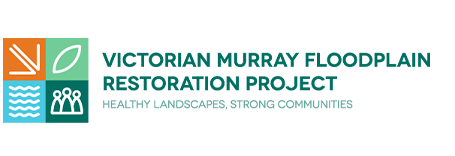2 February 2022
News
Birds flock to Murray River floodplain wetlands across northern Victoria
Birds are flocking to Murray River floodplain wetlands across northern Victoria following recent deliveries of environmental water. Hattah Lakes, Gunbower Forest and Lake Wallawalla are just some of the wetlands benefitting from environmental water ‘top ups’ , helping them spring back to life.
“Bird surveys conducted around flooded wetlands at Burra Creek and Vinifera by VMFRP contractor, Gary Cheers detected up to 22 grey-crowned babblers in spring 2021. Babblers (so-named because of their near-constant chattering ‘chuk’ calls to flock mates) are listed as endangered in Victoria. They are one of the Victorian Temperate Woodland Bird Community listed under the Flora and Fauna Guarantee Act 1988, as its range has contracted massively from the south of the state. The Murray River floodplains are important habitat for this once widespread Victorian bird. (Eco-sights Spring 2021 Monitoring report)
“When we see native species feeding and breeding in our wetlands, that’s a good indication that the wetlands are healthy,” said Gillis Horner, Ecologist for the Victorian Murray Floodplain Restoration Project (VMFRP). “Wetlands and floodplains are now recognised as a priority ecosystem – they can make a big contribution to the fight against climate change and loss of biodiversity.”
According to a recent report by the Ramsar Convention on Wetlands, wetlands offer unmatched opportunities for reducing emissions, adapting to climate impacts and reversing biodiversity loss, outweighing all other terrestrial ecosystems. Despite their potential, wetlands remain the world’s most threatened ecosystem. With 35% of global wetland area lost since 1970, they are disappearing three times faster than forests, leaving more than a quarter of wetland species threatened with extinction.
Wetlands are being celebrated for their vital contribution to human health as part of World Wetlands Day on 2 February 2022. It marks the anniversary of the signing of the Convention on Wetlands of International Importance (Ramsar Convention) in Ramsar, Iran, on 2 February 1971.
Murray River floodplains are home to several wetlands recognised as important, both nationally and internationally. Unfortunately, as we’ve changed the way the river flows over time, we’ve reduced the overbank flows needed to keep these wetlands healthy.
“The Murray River and its floodplains depend on intermittent flooding, a wetting-drying cycle, to stay healthy,” explained Gillis. “River regulation has caused blockages to flow and reduced the frequency, duration and extent of flood events. It also causes increasingly long dry periods between floods, making it harder for floodplains to bounce back.”
“That’s why we’ve identified nine ecologically significant floodplains in the North Central and Mallee regions for restoration. The infrastructure we plan to build at these sites will remove blockages to natural flows and allow us to hold water on the floodplain for as long as needed to support the environment, before returning it to the river.”
“The VMFRP will benefit popular nature hotspots like Hattah Lakes and Gunbower Forest, while ensuring irrigation water stays in the community,”
Planning for these floodplain restoration projects has been a long term process, documenting the values of these cultural and ecologically significant landscapes and identifying how best to deliver water to ensure they thrive. This next phase is going through an Environmental Effects Statement statutory planning process, where technical work in consultation with the community will outline the need for the project and minimise any environmental impacts during construction.
“These projects will substantially improve the health of our floodplain ecosystem, protecting these valuable landscapes for generations to come,” said Gillis.


